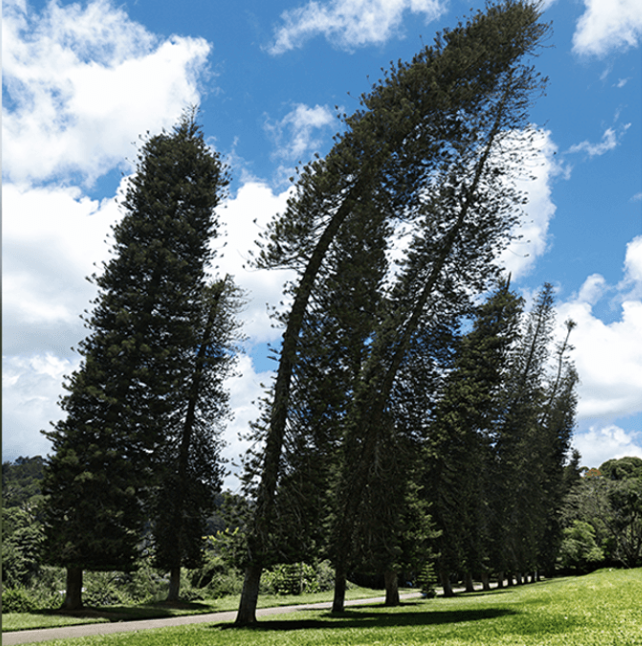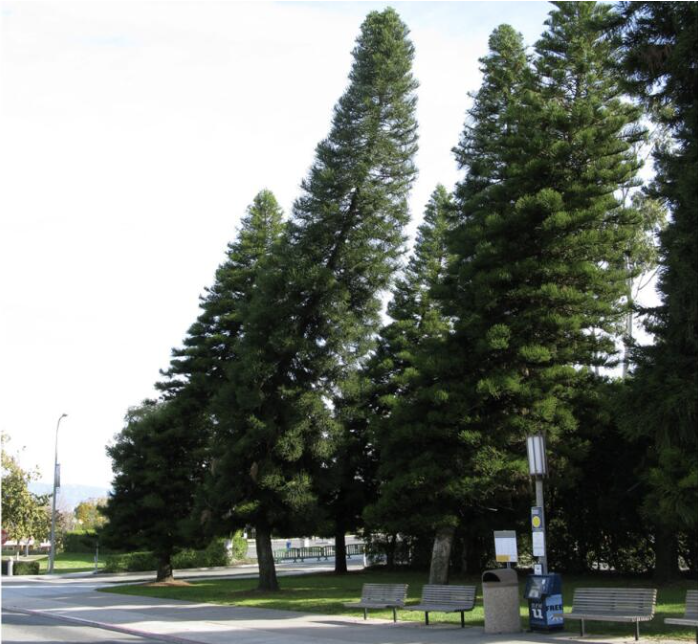
- calendar_month December 23, 2024
- folder Community Engagement
Sharing Tags
Cook Pine Trees, Environmental Science, Home Landscaping Tips, JohnHart, JohnHart Real Estate, Landscape Design, Latitude and Growth, Nathan Derry, Nathan Derry JohnHart, Nathan Derry Real Estate, Nathan Derry Realty, Natural Wonders, Nature Phenomena, Realtor Insights, Tree Adaptations, Unique Trees

As a Realtor who spends a lot of time appreciating the little details of homes and landscapes, I can’t help but notice fascinating quirks in nature. One that truly bends—literally—our understanding of trees is the Cook Pine. These majestic trees, originally hailing from New Caledonia, have a curious feature: they grow at an average tilt of 8.55 degrees, no matter where they’re planted.
That’s right—these trees don’t stand upright like the rest of their leafy cousins. Instead, Cook Pines lean, and the direction of their tilt is tied to their location. In the northern hemisphere, they lean south, and in the southern hemisphere, they lean north. The closer they are to the poles, the more pronounced their lean becomes. But why? Let’s dig into the roots of this mystery.
Theories Behind the Tilt

-
Sun Chasers? One of the most popular theories is that Cook Pines lean toward the sun. By growing at an angle, they maximize their exposure to sunlight throughout the day. Think of it as their way of optimizing solar efficiency. This theory makes sense for trees in areas with intense sunlight, but it doesn’t entirely explain why their tilt varies based on latitude.
-
Geotropic Response Some scientists believe that this tilt may result from the trees’ response to gravity (or lack thereof). Most trees grow vertically, using gravity as a guide. But Cook Pines seem to have a different internal compass, one that possibly misreads gravitational pull when they are planted far from their native environment.
-
Genetic Programming Could this peculiar lean be hardwired into their DNA? After all, Cook Pines evolved in specific conditions in New Caledonia. When transplanted to different parts of the world, they might be "confused" and default to a tilt as a survival mechanism.
-
Wind Influence In their native habitat, Cook Pines endure strong, steady winds. While this doesn’t fully explain the consistent tilt everywhere, it might have influenced the species' evolution to grow at an angle to better withstand windy environments.
A Lesson in Adaptability
Cook Pines are a testament to the adaptability of nature. While their lean might raise eyebrows, it’s a visual reminder of how living organisms adjust to their surroundings. Whether it’s a tree finding the best sunlight or a homeowner adjusting to a new neighborhood, we’re all constantly adapting to thrive.
As a Realtor, I see a parallel between Cook Pines and homeowners who embrace change and tilt toward opportunities. Whether you’re moving for a job, a growing family, or a fresh start, the key is to lean into the journey.
Fun Fact: Cook Pines and Real Estate

Did you know that Cook Pines are often used as ornamental trees in landscaping? Their unique tilt adds a whimsical, almost artistic touch to properties. If you spot one in a backyard or along a driveway, you’re looking at a natural conversation starter!
So, the next time you see a Cook Pine, take a moment to admire its tilt. It’s not just a quirky angle—it’s a natural marvel that reminds us of the beauty of adaptation and the mysteries of our planet. Just like finding your dream home, sometimes the best things in life come with a little unexpected tilt!
All the best,
Nathan Derry, Realtor

📍JohnHart Real Estate
📞(424) 303-0440
📧 nathan@jhagents.com
👨🏽💻 itsnathanderry.com
You deserve the opportunity to work with an ethical agent. Please give me a call today and let’s discuss your unique needs.
Interested in seeing a property or one of my off market properties in person? Contact me today! Who you hire matters!!!
Ready to make the best move of your life… let’s chat today!
#CookPineTrees
#NaturePhenomena
#TreeAdaptations
#EnvironmentalScience
#LandscapeDesign
#UniqueTrees
#LatitudeandGrowth
#NaturalWonders
#RealtorInsights
#HomeLandscapingTips
#NathanDerry
#NathanDerryRealEstate
